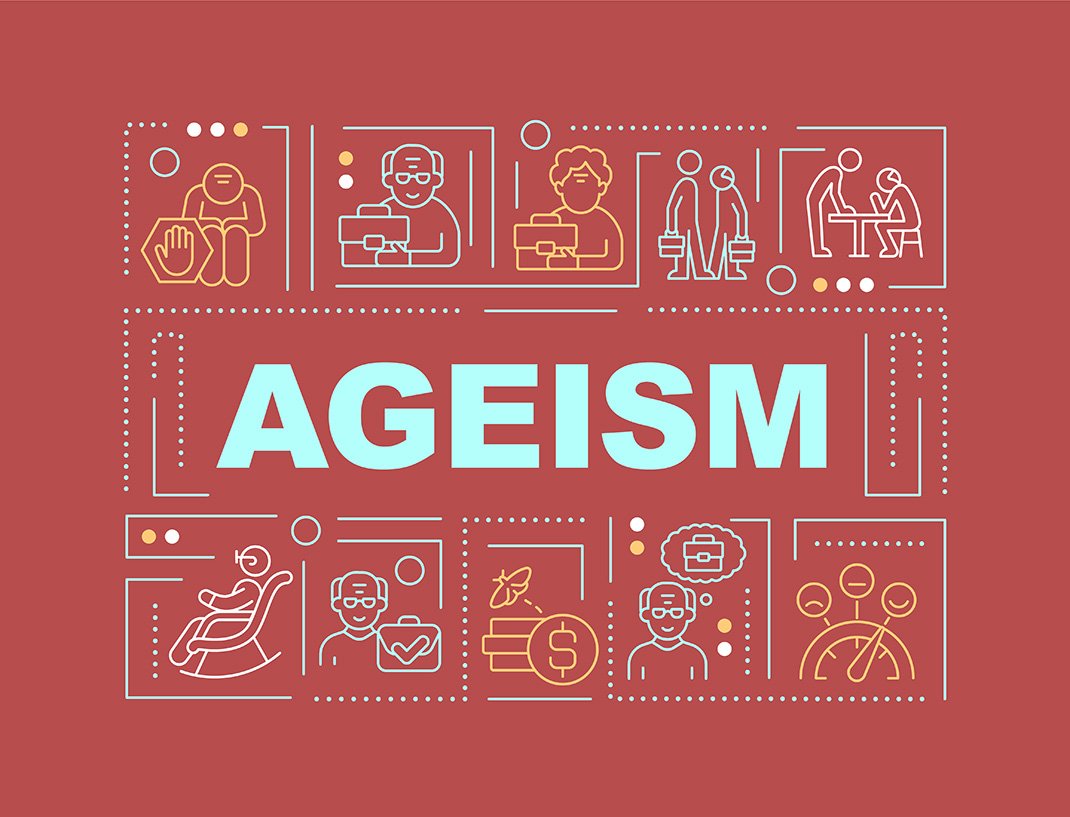Older workers still face discrimination, sometimes very subtle, because of their age
By Aaron Gifford
 A man who could be categorized halfway between middle-aged and senior citizen was recently hired by a staffing agency, only to be let go a week later with no feedback on what went wrong.
A man who could be categorized halfway between middle-aged and senior citizen was recently hired by a staffing agency, only to be let go a week later with no feedback on what went wrong.
When pressed for an answer, managers at the staffing agency said the new employee wasn’t as proficient on a software application as they had hoped, even though no metrics or deadlines had been established. The worker barely had a chance to dig into his assignments.
The worker wasn’t required to list his age on the application, but he did provide a driver’s license and Social Security card during on-site onboarding after the job offer was made. A supervisor also remarked that he thought they were bringing on someone younger.
In another recent situation, an employee with 25 years of experience who had glowing annual reviews during her entire career with the company applied for a promotion. The woman, in her 50s, had the required skill set and level of education, but was denied the position because she “lacked leadership potential.”
The co-worker who got the promotion was about half her age and had not worked in any supervisory capacity during her three years at the company.
Both of these local cases — clear red flags of age-related employment discrimination — are pending civil actions.
While complaints like these are infrequent and — more often than not — don’t go to trial, that doesn’t mean discrimination against older folks in the workplace is unusual in the rapidly aging Central New York region, attorneys explained.
“I think a lot of people think, ‘that’s just the way it is,’ and are discouraged from making a claim,” said Ryan Files, an associate attorney at the Gattuso & Ciotoli law firm in Fayetteville.
The American Association of Retired Persons in a recent study found that 6 in 10 workers older than 50 have experienced subtle forms of age discrimination at work. The study surveyed more than 2,000 people in that age demographic.
About a third of the survey participants said they have co-workers who assume their older peers are less tech-savvy, while a quarter of respondents indicated that others in their workplace wrongly assume that they are resistant to change. More than 20% also reported hearing offensive age-related jokes on the job or witnessing preferential treatment in job training for younger employees.
Moreover, more than a quarter of the respondents said their employer does nothing to address workplace age discrimination when it occurs, let alone proactively educating workers about laws and policies that should protect older employees. And about 20% said they feel like they’re being pushed out of their jobs because of their age.
“Given employers’ need for talent, it makes great business sense to hire experienced workers,” Carly Roszkowski, a vice president at AARP, said in a news release. “High-performing organizations know that building age-inclusive workplaces is not only the right thing to do, it’s a strategic necessity.”
With America’s birth dearth, workers over 65 remain the fastest-growing segment in the labor force and account for more than 60% of the expected growth in the labor force by 2030, according to the U.S. Bureau of Labor Statistics.
The AARP recently promoted Ageism Awareness Day. The national organization also garnered signatures from leaders across 3,000 companies affirming the respect and value of older workers.
“Older workers deserve to have the same rights and protections as their peers,” said Holly Biglow, AARP director of governmental affairs. “Leaders in Congress on both sides of the aisle have proposed common-sense solutions and we encourage the full Congress to pass these bills into law to ensure every American has the chance to get and keep their job.”
Locally, there have also been cases where veteran employees who built up their pay rates or salaries over time are let go in mass layoffs or cost-cutting measures, while younger workers who are paid much less are retained.
“They may be good at their jobs, but they are the ones on the chopping block,” Files said of the senior employees.
That presents a tricky situation for employers and can be difficult to resolve in court. Companies can’t avoid discriminatory actions in these instances by offering the older workers a pay cut to avoid position cuts, because “a change in pay is still an adverse action,” Files said.
The New York State Division of Human Rights identifies consideration of age in mass layoff situations as one of the common practices of age-related discrimination and encourages older workers who have been displaced in those situations to file a complaint.
The State Division for Human Rights typically reviews the complaint to include a phone interview with the victim. If that agency determines discrimination occurred, the victim has more leverage in attempting to settle with their employer or proceeding with a lawsuit.
“Working on a resolution privately is more common,” Files said. “Both sides usually prefer to keep it out of the public eye.”
The agency’s website says employers are prohibited by law from requiring a person to list their age on a job application beyond just answering if they are over 18. While older applicants avoid listing their entire job history or their college or high school graduation dates on a resume, employer online application forms can require them to note the dates they attended school.
“Unfortunately, it’s a workaround for them to get a feel for the person’s age,” Files said.
The federal government also has an agency, the U.S. Equal Employment Opportunity Commission, that helps protect older workers. Following a 2023 federal lawsuit filed by the EEOC, the iTutorGroup paid out $365,000 to job applicants who didn’t receive consideration because of their age. The company used an artificial intelligence program that automatically rejected applicants in their 50s and 60s, according to court papers.
“Everyone loses when employers engage in age discrimination,” Timothy Riera, acting director of EEOC’s New York District, said in a statement after the settlement. “Hundreds of applicants lost out on employment during a difficult time for job seekers and iTutorGroup’s students lost the opportunity to learn English from highly qualified and experienced tutors.”
That court decision prompted proposed state legislation in California, Illinois and New York. The bills are aimed at discouraging employers from using AI to recruit, screen, hire, promote, train and discipline employees.
The EEOC tracks the number of age-related employment discrimination complaints filed with that federal agency by state. In 2024, Texas led the nation with 1,860 complaints, followed by California with 1,089 and Florida with 1,103. New York state had 698. These figures don’t include complaints filed with state-level agencies.
The New York State Division of Human Rights received 1,519 complaints related to age discrimination in 2023. That agency received far more complaints that year related to disabilities (3,286), race (3,054) and retaliation against those who complained of discrimination (3,405), according to the most recent reports available on its website.
The agency’s 2023 report indicates a notable settlement after two temporary workers at a manufacturing facility in Western New York (ages not provided) were not offered permanent positions despite their exemplary work record there. One of the complainants recorded a hiring manager saying age was a likely factor in that decision. The company agreed to a $170,000 settlement.




